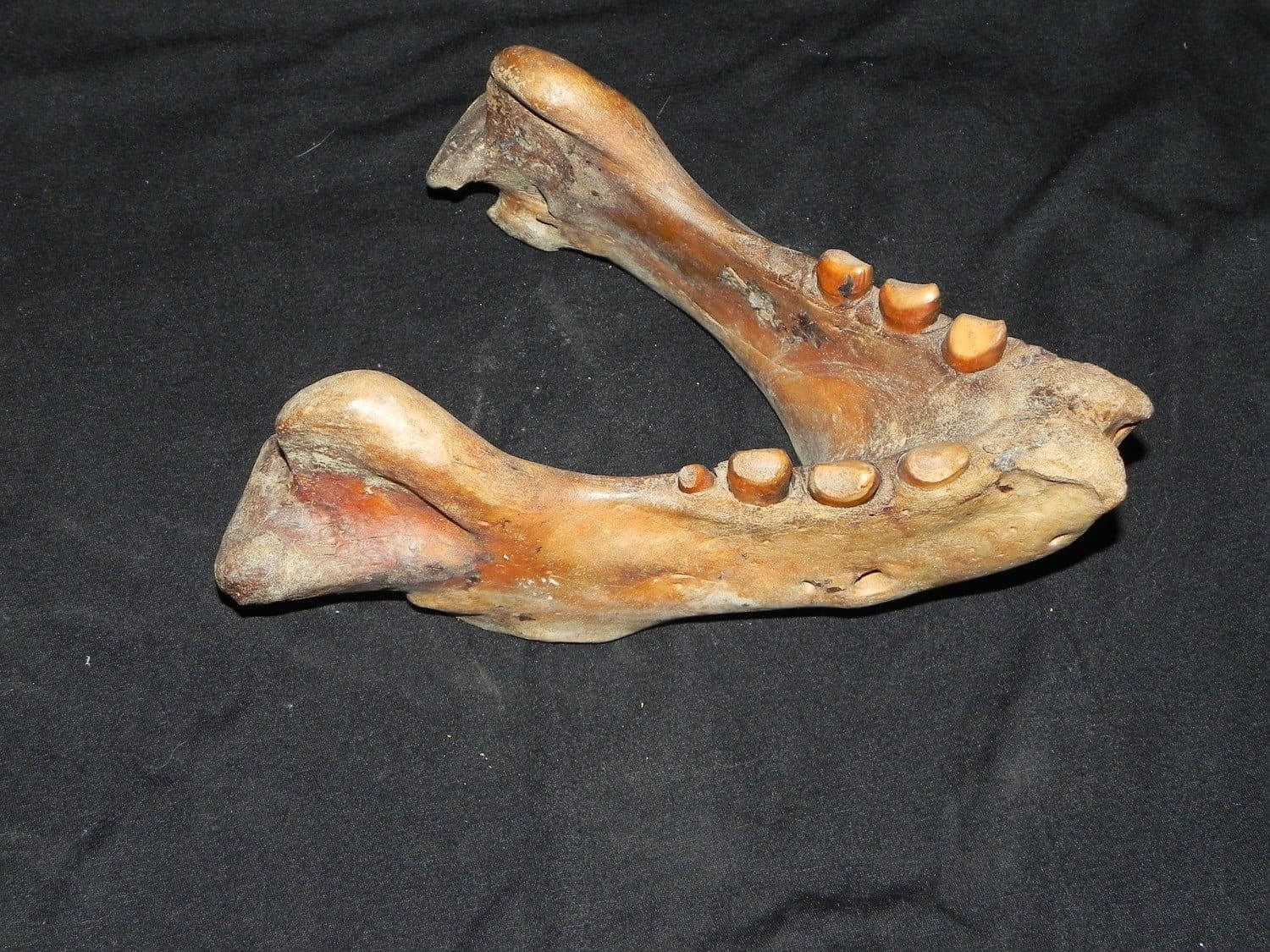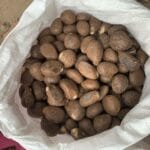Imagine a magnificent treasure, sculpted by nature itself. Walrus teeth ivory, a polar gem, has long held humans in awe with its beauty and durability. Its intricate grain patterns, like whispered secrets from the Arctic, have adorned countless works of art and cultural relics. But beyond its aesthetic appeal, walrus teeth ivory carries a profound history and cultural significance. Join us on an adventure to uncover the secrets of this precious material, its journey through time, and the ethical considerations surrounding its acquisition. Prepare to be enlightened as we delve into the world of walrus teeth ivory, where ancient traditions meet modern conservation concerns.
A Polar Treasure: Understanding Walrus Ivory
Walrus ivory, a captivating material with a rich history, holds particular cultural significance for the people of the Arctic. Unlike the common misconception that only the tusks provide ivory, even the walrus’s smaller teeth possess value. The ivory derived from the tusks, often referred to as “morse,” displays a beautiful, swirling, marbled pattern revealing the dentine within. In contrast, the ivory obtained from the teeth is smaller, resembling a peg.
For centuries, indigenous Arctic communities, such as the Inuit, Yupik, and Chukchi, have cherished walrus ivory, integrating it into the very fabric of their culture. It’s transformed into intricate carvings that narrate stories, embody their identity, and connect them to the Arctic’s raw beauty. Tools for daily life, ceremonial objects imbued with meaning, captivating artwork, and even trade pieces – all meticulously crafted from this precious material.
The trade of walrus ivory dates back to the Middle Ages. However, due to threats to walrus populations, this trade requires careful management. The Convention on International Trade in Endangered Species of Wild Fauna and Flora (CITES), an international agreement safeguarding plants and animals, plays a vital role in regulating the trade to protect walruses. Today, legal trade primarily focuses on enabling indigenous communities to utilize ivory for traditional practices, preserving their way of life. Regrettably, illegal trade and poaching still pose a threat, demanding vigilance in safeguarding these creatures.
What Makes Walrus Ivory So Valuable?
Walrus ivory’s value extends far beyond its monetary worth. Its scarcity, the intricate skill required to carve it, and its profound cultural significance contribute to its allure.
Due to strict regulations surrounding walrus hunting to safeguard their populations, walrus ivory is not easily obtainable. Its scarcity naturally elevates its desirability and, consequently, its value.
Carving walrus ivory demands a high level of craftsmanship. Its durability allows artisans to create intricate designs that endure for generations. This quality, combined with the artistry involved, makes each walrus ivory piece exceptional.
For many indigenous Arctic communities, walrus ivory is more than just a material; it embodies their heritage. Centuries-old carving traditions have incorporated walrus ivory into tools, jewelry, and artwork, each piece narrating a story and connecting them to their past.
However, ethical concerns surrounding the trade of walrus ivory cannot be ignored. While sustainable hunting practices aim to protect walruses, the demand for ivory must be carefully balanced with conservation efforts. Some argue that any trade in ivory, even sustainably sourced walrus ivory, could inadvertently fuel the demand for elephant ivory, which is a significant concern. This complex issue has no easy solutions, inevitably influencing how we perceive the value of walrus ivory.
The Cost of Treasure: Determining Walrus Ivory’s Worth
Assigning a monetary value to walrus ivory proves challenging, as its significance extends beyond mere economics. History, art, culture, and ethics all intertwine to shape its worth.
For communities like the Inuit or Yupik, walrus ivory transcends the realm of buying and selling. It represents a legacy passed down through generations, with tools and artifacts carrying stories etched into the ivory. This profound connection is immeasurable.
Adding to its value is the exceptional craftsmanship involved in transforming raw walrus ivory into intricate carvings and artwork. Each piece is unique, embodying the artist’s skill and the material’s resilient beauty. The artistry involved naturally commands a price, reflecting the hours of dedicated work.
However, the limited availability of walrus ivory, due to carefully managed walrus populations, further contributes to its desirability and cost. Balancing respect for tradition with the protection of these creatures poses an ongoing challenge.
Ethical considerations further complicate the issue of value. Discussions about sustainability, ensuring indigenous communities have a voice in how this precious resource is used, and finding a balance between honoring the past, present, and future of walrus ivory are crucial.
Are Walruses Killed for Ivory?
The demand for walrus ivory, particularly for their impressive tusks, raises valid concerns about the impact of ivory harvesting on walrus populations. Is it possible to obtain ivory without harming these magnificent creatures?
The desire for sustainable trade practices that don’t further endanger walrus populations presents a constant challenge. Finding a balance between respecting cultural traditions and ensuring the survival of these animals for future generations requires careful consideration.
Fortunately, many indigenous communities have hunted walrus for centuries and possess a deep understanding of the delicate balance required for sustainability. Traditionally, they utilize every part of the animal, minimizing waste and prioritizing the long-term health of walrus populations.
However, illegal hunting and poaching still pose a threat to walruses, particularly in areas already facing pressures from climate change and habitat loss. These activities demand attention and action to protect vulnerable populations.
Here are several approaches to address this complex issue:
- Supporting sustainable hunting practices empowers indigenous communities to effectively manage their resources while respecting their traditional knowledge.
- Combating illegal hunting and trade disrupts the flow of illegally obtained ivory through stricter enforcement and international cooperation.
- Promoting transparency in the walrus ivory trade makes it more difficult for illegally obtained ivory to enter the market by allowing for tracking and verification of its origin.
- Continued research and monitoring of walrus populations provides vital information for adaptive conservation strategies that address the evolving needs of walruses in a changing world.
The relationship between humans and walruses is complex, intertwined with history and tradition. Finding solutions that benefit both walruses and the communities that depend on them necessitates a delicate balance. Recognizing the challenges and working collaboratively are essential steps toward a future where both can thrive.
Recommended Titles:
Competitor Titles (Please Provide): To recommend titles that outperform your competitors, I need the competitor article titles. Please provide them!
Suggested Titles (Based on General Trends):
- Beyond the Tusk: The Enduring Art & Cultural Significance of Walrus Ivory (This title emphasizes both the artistic and cultural aspects, appealing to a broader audience)
- Identifying & Understanding Walrus Ivory: A Guide for Collectors & Enthusiasts (This title targets a specific audience interested in the practical aspects of walrus ivory)
- Walrus Ivory: Navigating Ethics, Sustainability, and the Law (This title focuses on the controversial aspects and legal complexities, appealing to readers seeking in-depth information)
Powerful Key Lines:
- More Than Just Tusks: Walrus ivory, sourced from both tusks and teeth, represents a unique material with deep cultural roots and a complex legal landscape.
- Arctic Artistry: For millennia, indigenous communities have transformed walrus ivory into intricate carvings, expressing their cultural identity and connection to the Arctic environment.
- Distinctive Beauty: From the swirling patterns of “morse” to the visible grain of its core, walrus ivory possesses unique visual characteristics that set it apart from other ivory types.
- Ethical Considerations: The trade and use of walrus ivory raise ethical questions about sustainability, indigenous rights, and the impact on walrus populations.
Structured Context:
I. Walrus Ivory: Origin and Characteristics:
- Source: Walrus ivory comes from two modified upper canine teeth (tusks) and, less commonly, from their teeth.
- Tusks:
- Can grow up to one meter in length (Pacific Walrus).
- Have a tooth enamel coating that wears off during the walrus’s life.
- Exhibit distinctive longitudinal cracks originating from the cementum.
- Cross-sections are generally oval with indentations.
- Composed of primary dentine (classic ivory appearance) and secondary dentine (marbled or oatmeal-like).
- Teeth:
- Smaller in size compared to tusks.
- Have a rounded, irregular peg shape.
- Average length is approximately 5 cm.
- “Morse”: Alternative name for walrus ivory, often referring to the ivory from tusks.
II. Cultural Significance:
- Arctic Folk Art: Walrus ivory carving holds immense cultural value for Arctic indigenous peoples, including:
- Inuit, Inupiaq, and Yupik: (Greenland and North America)
- Chukchi and Koryak: (Russia)
- Historical Use:
- Tools
- Ceremonial objects
- Artwork
- Trade commodity
- Contemporary Carving: The Chukchi and Bering Sea Yupik communities continue to produce walrus ivory carvings.
III. Trade and Legal Status:
- Historical Trade: Walrus ivory has been traded for centuries, reaching European markets as early as the Middle Ages.
- Modern Restrictions: International trade in walrus ivory is regulated under CITES (Convention on International Trade in Endangered Species of Wild Fauna and Flora).
- Legal Trade: Some legal trade in walrus ivory exists, primarily for indigenous communities who rely on it for subsistence and cultural purposes.
- Illegal Trade and Poaching: Concerns remain regarding the illegal trade of walrus ivory and its potential impact on walrus populations.
IV. Distinguishing Walrus Ivory:
- Grain: Visible, often described as grainy or marbled, particularly in secondary dentine.
- Cracks: Fine longitudinal cracks are common, appearing radial in cross-section.
- Color: Can range from creamy white to yellowish-brown.
- Shape: Tusks are generally long and curved, while teeth are smaller and peg-shaped.
V. Ethical Considerations:
- Sustainability: The trade in walrus ivory raises questions about sustainability and the potential impact on walrus populations, especially in the context of climate change and habitat loss.
- Indigenous Rights: Balancing the economic and cultural needs of indigenous communities with conservation efforts is crucial.
- Animal Welfare: Discussions around the ethical treatment of walruses and the potential for cruelty in obtaining ivory are important to acknowledge.
Unique Insights & Untapped Potential:
- Focus on the Human Story: Explore the personal stories of indigenous artisans who work with walrus ivory, highlighting their traditions, techniques, and the cultural significance of their craft.
- The Impact of Climate Change: Investigate how climate change is affecting walrus populations and the availability of walrus ivory, potentially leading to shifts in traditional practices and trade.
- Modern Applications and Alternatives: Discuss any contemporary uses of walrus ivory beyond traditional carving and explore potential sustainable alternatives to walrus ivory.
- Consumer Education: Provide readers with practical information on how to identify genuine walrus ivory and avoid contributing to the illegal wildlife trade.
Remember: This information is a starting point for your research. Always verify information from multiple reputable sources.
- Unveiling Bernhard Caesar Einstein’s Scientific Achievements: A Legacy in Engineering - July 15, 2025
- Uncover who is Jerry McSorley: CEO, Family Man, Business Success Story - July 15, 2025
- Discover Bernhard Caesar Einstein’s Scientific Contributions: Unveiling a Legacy Beyond Einstein - July 15, 2025















